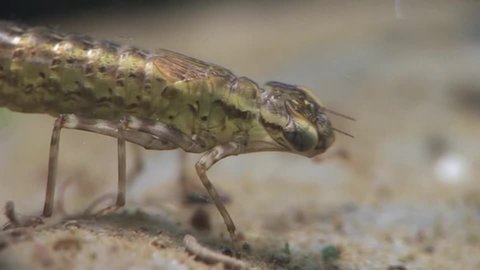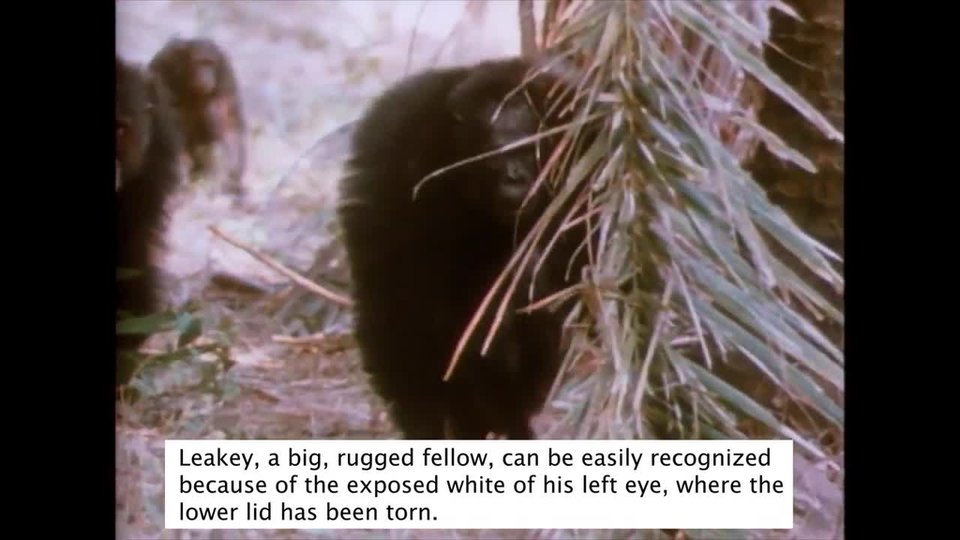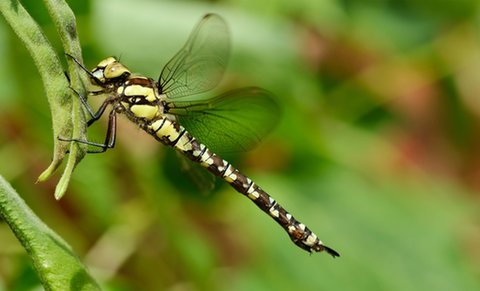
adult dragonfly
Theolderversionhasthreebodysegments.Likeallinsects,ithasahead,thorax,andabdomen.Ithassixlegs.Ithastwopairsofwings.Itshugeeyesaresoclosetogetheronthetopofitshead,theytouch.Thecolorsofitsbodyare brilliant.
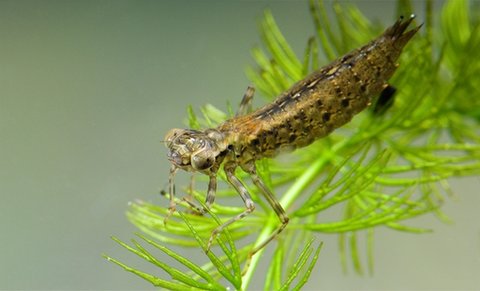
dragonfly nymph
Theyoungerversionalsohasthreebodysegments.Ithassixlegs,too.Butitswingshavenotyetformed.Itseyesaresetfarapart. Andit'snotas colorful.
Thisisthesameanimal,thesouthernhawkerdragonfly.Youarejustseeingitatdifferentpointsinits life.
Lookatthemside-by-side.Theyaredifferentversionsofthesame thing!
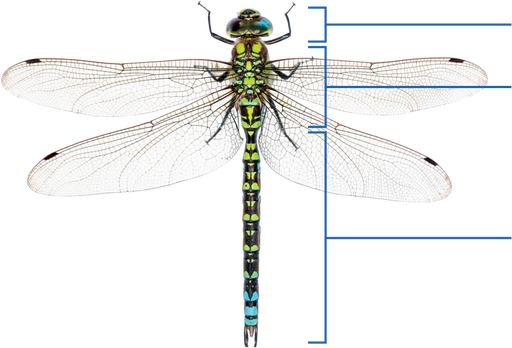
InsectBody Parts
head
thorax
abdomen
ChangesAhead
Allinsectsundergometamorphosis.Thisprocessofchangetakesplaceasaninsectnearsadulthood.Morethan80percentofinsectsexperiencecompletemetamorphosis.Thishappensinfourstages:egg,larva,pupa,andadult.Dragonfliesexperienceanincompletemetamorphosis.Thishappensinonlythreestages:egg,nymph, and adult.
SouthernhawkersareoneofthemostcommondragonfliesinEurope.Theylivenearsmallpondsandwoodlands.Eachdragonflybeginslifeasan egg.
Maleandfemaledragonfliesmateinlatesummerorearlyfall.Thefemalelayshereggs,onebyone,insidethestemsorleavesofawaterplant.Thiskeepsthemsafefrom predators.
Tohatchinthespring,theyoungdragonflyswallowswaterthroughthecasingoftheegg.Theeggthenswells.Asharppointeronthedragonfly’sheadpiercestheegg.Itbursts open.
Aprolarvaemergesandfreesitselffromitscovering.Itentersthewaterandshedsitsskin.Itisnowa nymph.
Nymphsmust molts, orshedtheirskin,anumberoftimesastheygrow.That’sbecausetheirouterlayer,calledanexoskeleton,cannotstretchorgrow.Whentheinsectgetstoobigforitsskin,theskinsplits open.

Asouthernhawkernymph'sbodyisbrownandgreen.Thesecolorsmakethenymphhardertoseein water.
Asouthernhawkernymphmoves underwater.
Deepbreathscausethesplittowiden.Thesouthernhawkerthenshrugsoutoftheoldskin.Nowthedragonflynymphisslightly larger.
Moltingishelpfulinanotherway.Itallowsdamagedtissuetoheal.Missinglimbscanregenerate,orgrowagain.Yet,moltingcanbeadangeroustime,too.Untilthenewexoskeletonhardens,thedragonflyisexposedto predators.
MoreMobile
Adragonflynymphcanzipthroughthewater.Itmovesbysquirtingwateroutofitsbackend.Thispropelsitforward.Thedragonflyneedstomovequicklybecauseitisanactive hunter.
Thenymph’sbodyisbrownandgreen.Thesecolorshelpitblendinwithpondorlakewater.Itishardforeitheritspredatorsorpreytospotit.Yet,thenymphcanseethemquite well.
Atthisstageinitslife,thesouthernhawker’slargeeyesaresetfarapart.Itseyesarealwaysscanningforprey.Thenymphneedstoeatandlooksforinsects,smalltadpoles,and fish.
Asouthernhawkernymph'seyesaresetfar apart.
